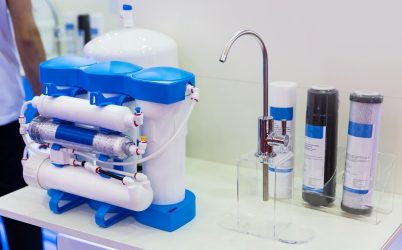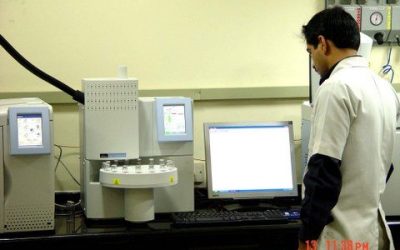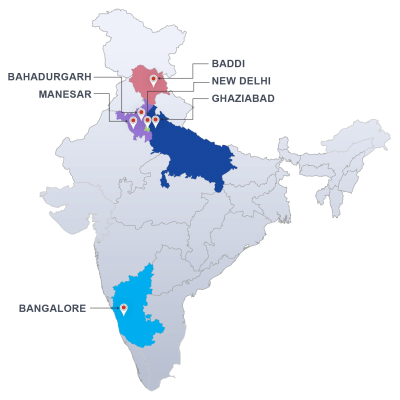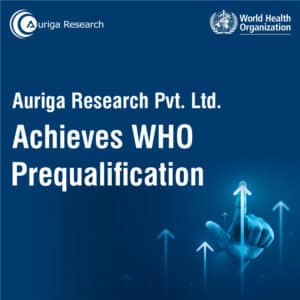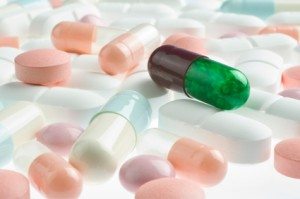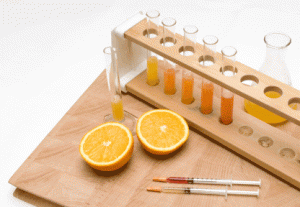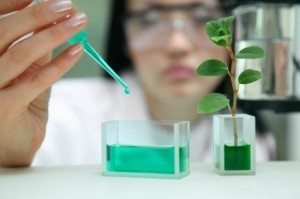Do you know that high nitrate levels in water can cause several deadly diseases especially among infants? Nitrate contamination is a severe issue. A long-term exposure to nitrate in drinking water creates several health problems like stunted growth and diseases in children. It is not just dangerous for humans but livestock too. Nitrogen pollution of water can lead to severe consequences not only to human health but the environment too.
Numerous studies show that nitrogen pollution of water is on the rise and it is a global menace. So whether you have a food processing industry,packaged drinking water business or pharmaceutical manufacturing business it is crucial to get nitrate testing of water to ensure quality, authenticity and regulatory compliance for safety and security of consumers.
What is nitrate?
Nitrate (NO3) is a compound that contains nitrogen and oxygen and is known as a salt. Nitrogen is released by decomposing material such as plants, human and animal wastes. Nitrates are essential for plant growth as they facilitate the production of amino acids and proteins. Nitrate is highly water soluble and excess nitrate, not used by plants, can leach through soil into groundwater.
What causes nitrate in water?
It is difficult to detect nitrate in water as it is colorless, odorless, and tasteless. This is why it is important to get it tested in an authorized laboratory. Decaying plant and animal residues leave nitrogen in soil. It is highly soluble and moves with water through layers of soil.
Several human activities like waste disposal, fertilizers, on-site sewage systems, wastewater treatment effluent, animal wastes, urban drainage, septic tanks industrial wastes and food processing are the major reasons for the contamination of water. The rampant use of nitrogen-based fertilizer in agriculture and rapid urbanization are also major reasons behind the contamination of surface water.
Level of Nitrate
According to the Environmental Protection Agency (EPA) our drinking water contains 10 parts per million (ppm) of nitrate or less. Water consumption and diet are the major factors which contribute to the nitrate intake in the body. The high level of nitrate in the body clearly indicates that nitrates in drinking water is higher than safe levels.
Effects of nitrate on our health
- Nitrate becomes toxic primarily when bacteria in our digestive system convert it to nitrite. The nitrite oxidizes iron in the haemoglobin of our red cells to form methaemoglobin. Levels above 25 percent can lead to weakness, rapid pulse and breathing. Levels over 50 to 60 percent could be life threatening.
- The most significant health effect associated with nitrate ingestion is methemoglobinemia in infants under 6 months old. This condition results from high nitrite levels in the blood. Untreated, severe methemoglobinemia can result in brain damage and even death.
- Numerous studies have shown that a long-time exposure to nitrates and nitrites can cause an excessive discharge of urine, increased starchy deposits and haemorrhaging of the spleen.
- Nitrates also lead to build-up of algae and bacteria in water. These bacteria emit cytotoxins that are toxic to humans leading to repeated diarrhoea infections often lead to nutritional deficiencies and stunted growth.
Nitrate Testing Procedure
- Fill the sample bottle with sample water. Use gloves if drawing the sample by hand.
- Rinse and fill one test tube to the 2.5 mL line with water from the sample bottle.
- Dilute to the 5 mL line with the Mixed Acid Reagent. Cap and mix. Wait 2 minutes.
- Use the 0.1 g spoon to add one level measure (avoid any 50-60 times in one minute). Wait 10 minutes.
- Insert the test tube into the Nitrate Nitrogen Comparator. Match the sample colour to a colour standard. Record the result as mg/L(ppm) Nitrate Nitrogen (NO3-N). To convert to mg/Nitrate (NO3) multiply by 4.4.
- Place the reacted sample in a clearly marked container. Arrangements should be made with toxic material handlers for safe disposal.
Treatment for Nitrate
The best way to treat Nitrate contamination in drinking water is through the process of reverse osmosis, ion exchange units and distillation.
Ion exchange unit
As water flows through the ion exchange unit, the resin coated with sodium ions exchanges chloride ions for nitrate and sulphate ions in the water.
Reverse osmosis
As water enters the unit under pressure, it pushes against a cellophane-like plastic sheet or cellulose known as semipermeable membrane. The membrane acts like a sieve, leaving ions like nitrates on one side and allowing ion-free water to pass through the membrane. Reverse osmosis requires a sediment filter, storage tanks, a membrane, and an activated carbon filter. Units usually operate at the point of use- kitchen tap, bathroom sink, etc.
Distillation is a traditional method for removing minerals and other components from water. Water is boiled, cooled and condensed. The condensed water is then free of solids, salts and heavy metals.
Sample Collection Method
- Locate a sampling tap that is after treatment (if applicable) but before water enters the distribution system.
- Remove any attachment from the tap such as hoses, filters, screens, or aerators.
- Flush the water for about 5 minutes or until the water reaches a constant temperature.
- Fill the sample container to the shoulder of the bottle
- After completing sample collection Keep all samples refrigerated until you are ready to ship them. When samples are ready for shipping, pack the samples, frozen chemical cold pack, and completed sample information form into a container and ship it to the laboratory within 24 hours.
Factors to be considered to know nitrate contamination in water
- Source of drinking water
- How often is it tested for bacteria and nitrates?
- Are there any agricultural or industrial activities close to the source of drinking-water?
- What type of sewer system is used?
- Has there been any recent flooding in the area?
- Is there a bottle-fed infant in the home?
Nitrate testing of water in laboratory
It is essential to get your water tested for nitrate contamination from a certified laboratory for accurate results. Nitrate water analysis in a laboratory is essential for an accurate and reliable nitrate measurement.
Our laboratory has been accredited by NABL to the ISO IEC 17025, since 2003. With PAN India footprints, we have testing laboratories in New Delhi, Himachal Pradesh, Haryana, and Bangalore. Our labs are also approved by the Bureau of Indian Standards for testing of water to various national and international standards. We can help you comply with water regulatory laws and guidelines. Our laboratory has been accredited and notified by NABL, FSSAI, BIS, CDSCO, ISM&H, APEDA, EIC/EIA, AGMARK.
Our provisions for water testing
* Drinking Water Testing – IS 10500, * Packaged Drinking Water Testing – IS 14543, * Packaged Natural Mineral Water Testing – IS 15485, * Water for Food Processing Industry – IS 4251, * Borewell Water Testing – IS 10500, * Borewell Water Testing as per WHO, * Borewell Water Testing as per EPA, * Water Testing as per EC 93.
We are well known for our drinking water testing capabilities. We follow the guidelines provided by the Bureau of Indian Standards, World Health Organization, US Environmental Protection Agency, and other standards. Our experts look into the following factors while conducting drinking water analysis for organizations:
- Helping you design the annual testing program suitable for your organization by deciding what tests to conduct and at what frequency
- Testing of the source water – municipal or ground or surface water
- Evaluating the performance of your water purification system
- Helping you design or select a water purification system
- Conducting independent sampling from your offices or factories
- Delivering reports with actual results you can use in a timely fashion
We provide the most reliable solutions to keep your water safe from any toxins or contaminants. Call our experts for precise and accurate nitrate testing of water.
FAQ
- What are the methods for testing nitrate in water?
IS 3025: Part 34: 1988
- Which equipment is used for testing nitrate in water?
UV spectrophotometer
- How long the test takes:
The test takes around 2 days
- What is the sample quantity required?
2ml per sample
- What is the cost of conducting test?
Cost of conducting nitrate test in water is Rs 1500 per sample but is usually much lower as part of a package for complete testing of water samples




